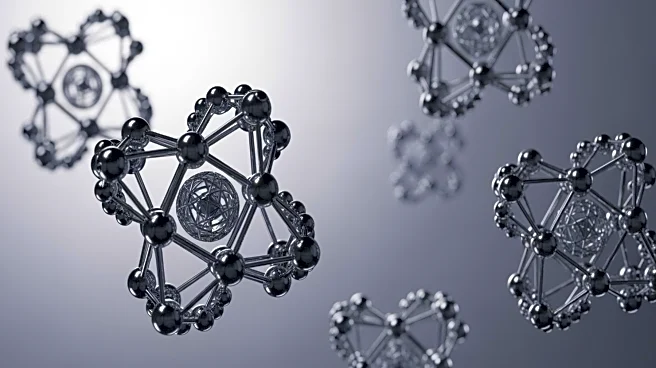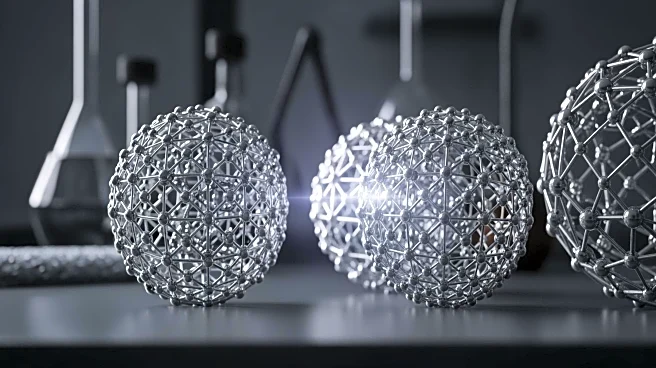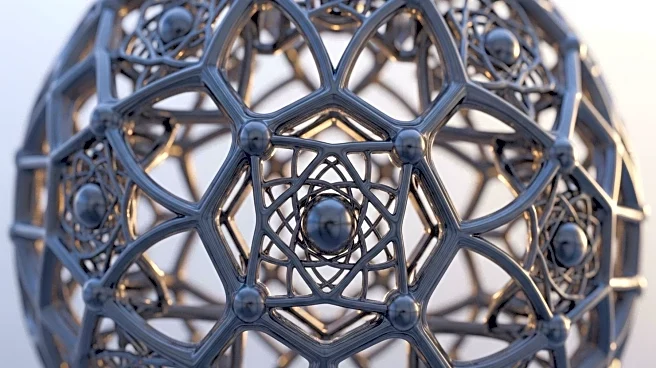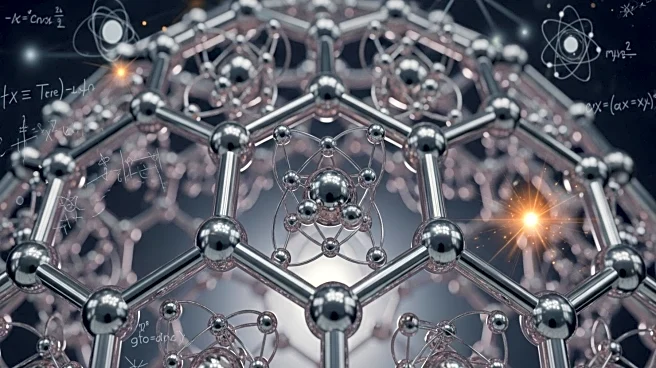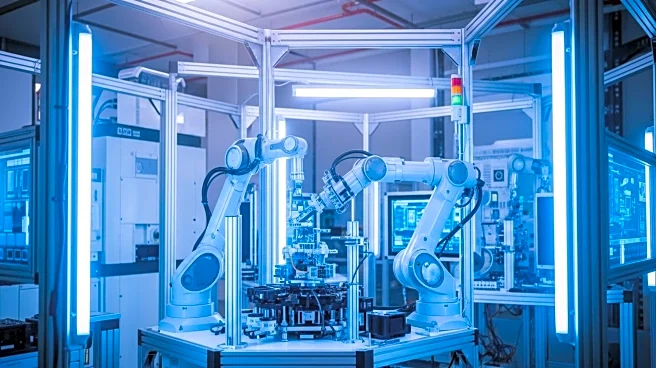What's Happening?
Researchers at MIT have uncovered that subtle chemical patterns within metal alloys persist even after standard industrial manufacturing processes. This discovery challenges the conventional belief that such
patterns are insignificant or disappear during manufacturing. The study, published in Nature Communications, reveals that these patterns can influence the strength, durability, and heat resistance of metals. The team developed a model predicting how these patterns form, potentially allowing engineers to adjust them to fine-tune a metal's properties for various applications.
Why It's Important?
The findings could revolutionize the manufacturing industry by enabling the production of metals with tailored properties for aerospace, semiconductor, and nuclear applications. Understanding these atomic patterns allows for the design of alloys with specific characteristics, potentially enhancing performance and durability. This could lead to more efficient manufacturing processes and improved material properties, benefiting industries reliant on high-performance metals.
What's Next?
Researchers are exploring how these chemical patterns develop across different manufacturing conditions, aiming to create a map linking metal processing steps to chemical patterns. This could transform the way engineers approach metal design, using these patterns as levers to achieve desired properties. The study opens new avenues for applied research, moving from fundamental understanding to practical applications in manufacturing.
Beyond the Headlines
The discovery highlights the importance of non-equilibrium states in materials science, challenging existing theories and offering new insights into atomic interactions. This could lead to a deeper understanding of material behavior under extreme conditions, influencing future research in metallurgy and materials engineering.
